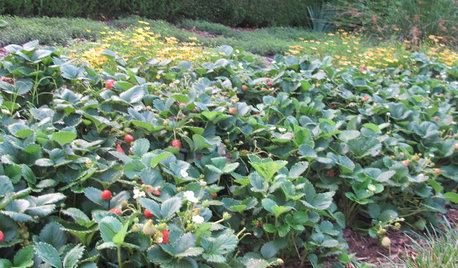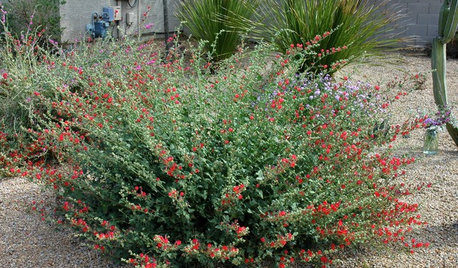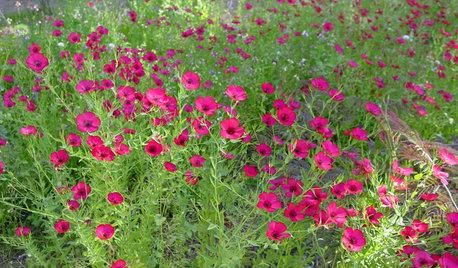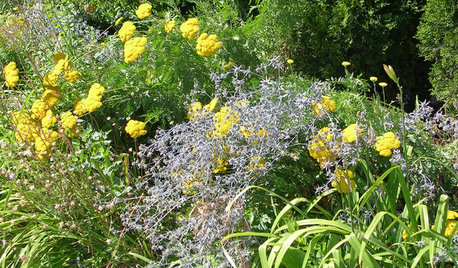fertilizers
jplumeria
11 years ago
Related Stories

GARDENING GUIDESGet on a Composting Kick (Hello, Free Fertilizer!)
Quit shelling out for pricey substitutes that aren’t even as good. Here’s how to give your soil the best while lightening your trash load
Full Story
GARDENING GUIDESHow to Keep Your Citrus Trees Well Fed and Healthy
Ripe for some citrus fertilizer know-how? This mini guide will help your lemon, orange and grapefruit trees flourish
Full Story
GARDENING GUIDESCommon Myths That May Be Hurting Your Garden
Discover the truth about fertilizer, soil, staking and more to keep your plants healthy and happy
Full Story
GARDENING GUIDESHow to Switch to an Organic Landscape Plan
Ditch the chemicals for a naturally beautiful lawn and garden, using living fertilizers and other nontoxic treatments
Full Story
GARDENING GUIDES5 Prairie Wildflowers That Can Heal Your Soil
Get free, organic soil fertilizer with nitrogen-pumping plants that draw pollinators too
Full Story
REGIONAL GARDEN GUIDESSoutheast Gardener's September Checklist
Fertilize strawberries, plant a tree or two and beckon hummingbirds to your Southern garden this month
Full Story
GARDENING GUIDESSouthwest Gardener's February Checklist
Orange you glad for a citrus-fertilizing reminder? And don't forget the recommended doses of vegetable seeds and cold-hardy flowers
Full Story
GARDENING GUIDESSouthwest Gardener's August Checklist
Manage monsoon effects, remember to fertilize and don't let the heat deter you from planting for fall
Full Story
GARDENING GUIDESRocky Mountain Gardener: What to Do in July
Keep the party going all summer long with smart watering methods and fertilizer. Get ready for next year and order bulbs now
Full Story0

GARDENING GUIDESPacific Northwest Gardener: What to Do in September
Put in cool-weather veggies, fertilize your lawn and tidy the garden this month before chilly weather arrives
Full Story







rox146
Kimo
Related Professionals
Allentown Landscape Architects & Landscape Designers · Taylorsville Landscape Architects & Landscape Designers · Jackson Landscape Contractors · Clayton Landscape Contractors · East Patchogue Landscape Contractors · Painesville Landscape Contractors · Raleigh Landscape Contractors · South Hackensack Landscape Contractors · University City Landscape Contractors · Waldorf Landscape Contractors · West Haverstraw Landscape Contractors · Westchester Landscape Contractors · Baltimore Siding & Exteriors · Chesterfield Siding & Exteriors · Saint Charles Siding & Exteriorsthe_first_kms2
Robert (zone 7a, Oklahoma)
elucas101
mksmth zone 7a Tulsa Oklahoma
jplumeriaOriginal Author
jplumeriaOriginal Author
beachplant
jplumeriaOriginal Author
beachplant
tapla (mid-Michigan, USDA z5b-6a)
jplumeriaOriginal Author
powderpuff
Loveplants2 8b Virginia Beach, Virginia
tapla (mid-Michigan, USDA z5b-6a)
powderpuff
tapla (mid-Michigan, USDA z5b-6a)
jplumeriaOriginal Author
tapla (mid-Michigan, USDA z5b-6a)
the_first_kms2
beachplant
elucas101
tapla (mid-Michigan, USDA z5b-6a)
tapla (mid-Michigan, USDA z5b-6a)
elucas101
tapla (mid-Michigan, USDA z5b-6a)
Loveplants2 8b Virginia Beach, Virginia
powderpuff
tapla (mid-Michigan, USDA z5b-6a)